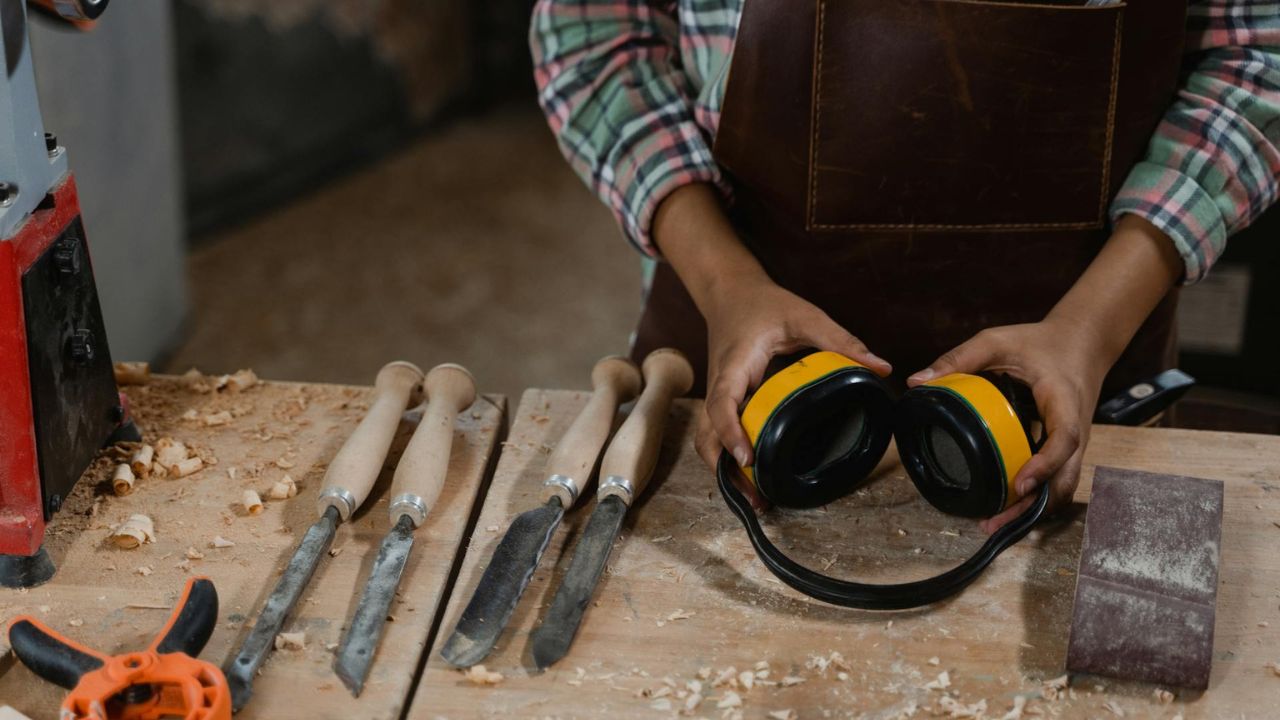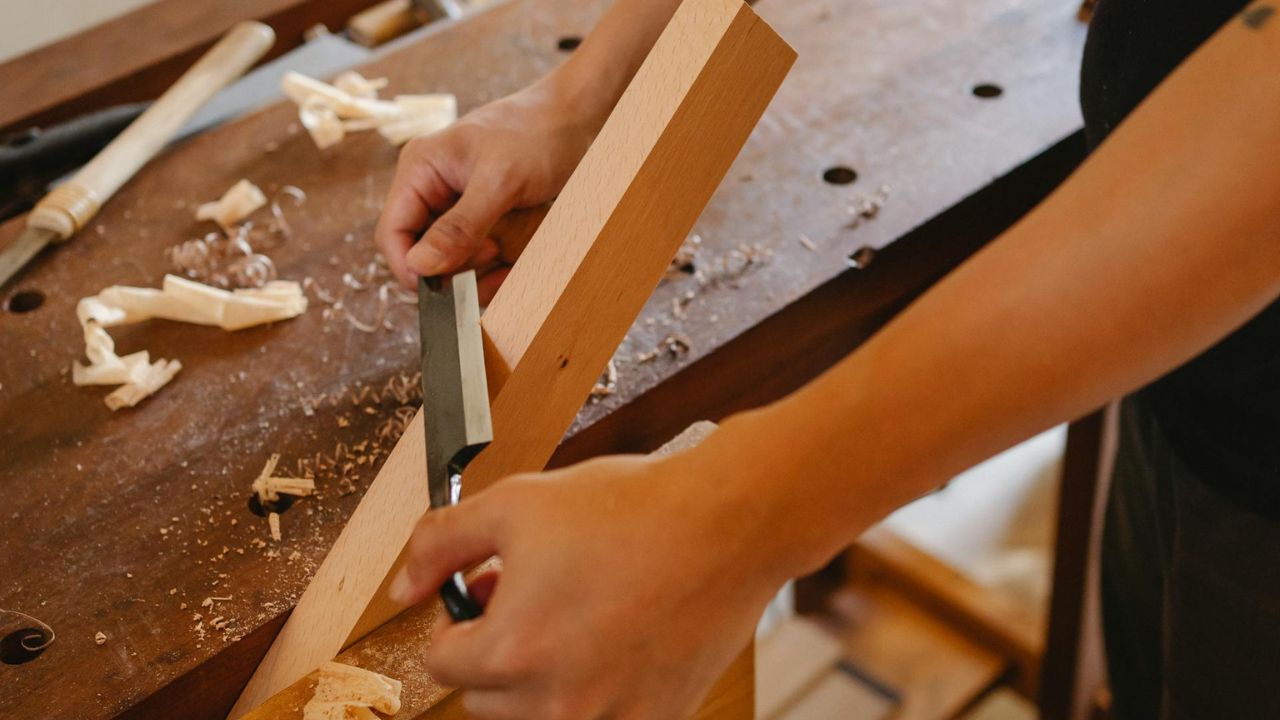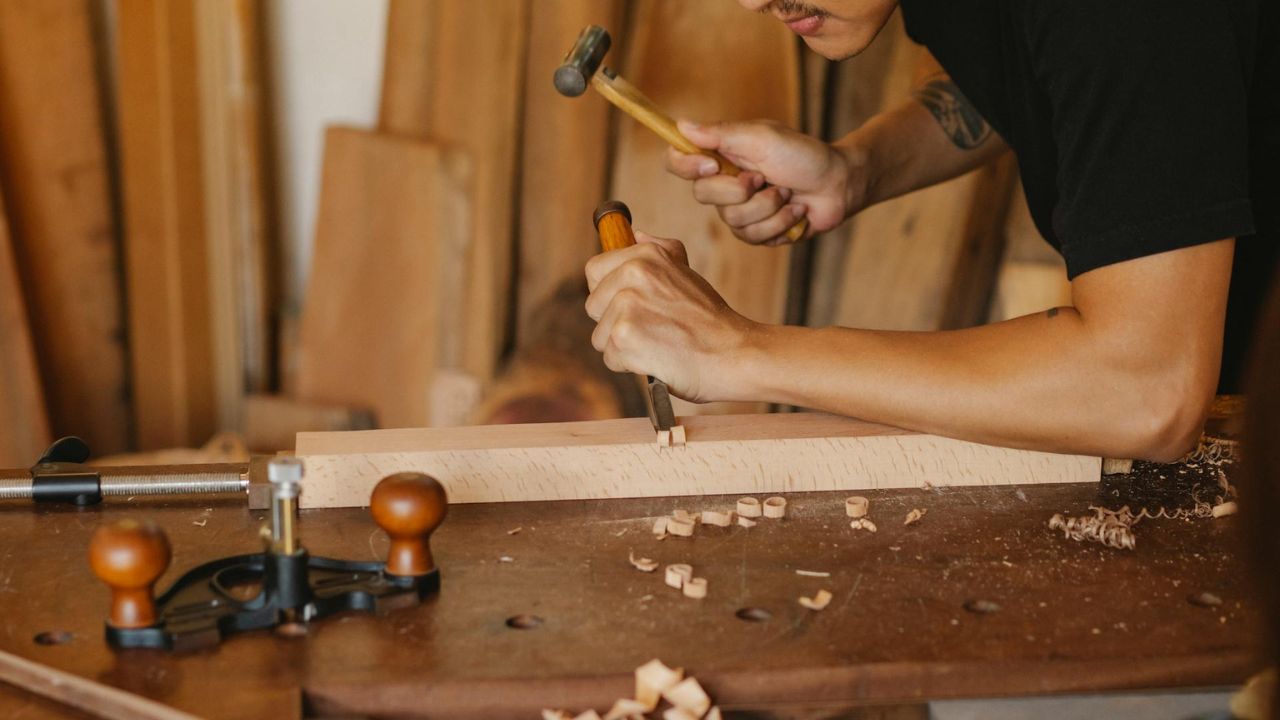How to Start Woodworking? A Beginner’s Guide to Tools, Techniques, and Projects
Woodworking has been an artisan profession for quite a long time—a field of expertise that perfectly balances flair between the creative spirit, precision, and practicality. From building homes to decorating your furniture, one may say endless diverse ways await your creativity. Whosoever gets keen and serious to understand how to initiate would certainly appreciate coming along toward such enlightenment.
The aim of this tutorial is to take you through all that you may want to get started with, right from the very basics of tools and materials to the tips that you may need for mastery of the art. We would like to introduce you to an amazing resource that can fast-track your skills: have a look at this woodworking guide for more detailed insights.
Take Your Woodworking to the Next Level! Build 16,000 Woodworking Projects With Step-By-Step Plans
Why Woodworking?

Before explaining the “how,” let’s talk a little about the “why.” It is more than just a great hobby, but also one of the most effective means of expression, creating functional items, and even saving money by making your own furniture. Besides, it feels great to see a project go alive right from a simple piece of wood. Besides, working with your hands is considered a sort of relaxation and a kind of disconnect from the virtual world.
Getting Started: The Must-Have Tools for a Starter Amateur
The very first steps in learning to start woodworking involve having the right tools. You do not have to spend a fortune in your beginning stage—updating will be done as you grow. Here are the essential tools for beginners:
- Workbench: This rigid workbench is the backbone of any workshop; it gives a flat, firm surface to do your cutting, assembly, and finishing.
- Saw: A handsaw or a circular saw is essentially the most important tool in cutting wood into needed dimensions. Later on, one can invest in a table saw for fine works.
- Measuring Tools: These would also include a tape measure, combination square, and marking gauge meant for making the right measurement.
- Clamps: These hold pieces of wood together while the glue dries or at the time of assembly.
- Chisels: Used in carving and shaping of wood.
- Hammer and Mallet: To drive nails or to tap the chisels.
- Drill: A power drill is versatile and necessary for making holes and driving screws.
- Sandpaper and Sanding Blocks: To smoothen surfaces and edges.
- Safety Gear: Safety glasses, ear protection, and a dust mask are not to be compromised.
If you are puzzled about where to start or if you want to save your time, take a look at this ultimate woodworking guide that has step-by-step suggestions about tools and techniques.
Choosing the Right Type of Wood
Not all woods are created equal, and the type you’re going to choose will depend upon your project and the budget you intend to use. Following are some of the different types of wood ideal for a first-timer:
- Pine: Soft, cheap, and easy to work with; good to practice projects on.
- Plywood: General-purpose material of bonded thin layers of wood.
- Oak: Hard and resistant, perfect for furniture.
- Maple: Fine finish for mainly decorative pieces.
- Cedar: Resistant to rot, works well for outdoor projects.
When choosing wood, select straight boards with few knots or cracks. This will go a long way in simplifying your projects and enhancing their professional appeal.
Setting Up Your Workspace
A good workplace is the key to good woodworking. Be it a corner of your garage or even a shed, it should be well-organized and safe. Following are some tips:
- Lighting: One should have good enough lighting to clearly see the work he is doing.
- Ventilation: Woodworking can produce a lot of dust, so good ventilation is a must.
- Storage: Shelves, pegboards, or tool chests will keep the tools organized and within reach.
- Power Supply: Have access to electrical outlets to plug your power tools into.
Basic Woodworking Techniques

By now you should have your tools and a place to work. It is time to learn a few basic techniques. These basic skills will form the foundation for more complex projects.
- Measuring and Marking: Very important in woodworking. Always measure twice and cut once.
- Cutting: Practice making straight cuts with your saw. If necessary, use a guide.
- Drilling: Making pilot holes for woods so that the woods will not split.
- Sanding: Always start with a coarse grit sandpaper, working your way through to finer ones for an ideal smoothness.
- Assembly: Clamps hold the pieces in place when gluing up or driving screws.
For detailed steps and how-to’s of more involved processes, see this fine woodworking guide.
Begin Your First Project
This is always great for any novice woodworker because starting with the simplest projects creates the building block for confidence and eventually their skill level. Some of these are as follows:
- Cutting Board: Great for getting the beginner to develop skills in measuring, cutting, and sanding.
- Shelf: Practice making straight cuts and assemble pieces.
- Picture Frame: Know how to use angles and precision.
- Birdhouse: Good and fun project in basic construction methods.
Remember, the process should be enjoyed while learning. Your first projects do not have to be perfect since it is an acquired skill.
Safety Tips in Woodworking
The safety should always come first. Following are some of the key tips to be followed:
- Safety Gear: The safety glasses, ear protection, and dust mask should be worn at all times.
- Clean Workspace: A cluttered workspace invites accidents.
- Proper Use of Tools: Always use a certain tool according to the usage instructions provided by the manufacturer.
- Care of Power Tools: Always unplug the power tools whenever not in use. Also, keep your fingers away from blades.
- Comfortable Pace: Never hurry; this will result in accidents and mistakes.
Skill Building
Once you have learned all the basics, then you can start expanding into more detailed techniques and projects. You may want to learn about the following:
- Joinery: Examples include dovetail and mortise-and-tenon joints.
- Woodturning: This is using a lathe to create rounded shapes.
- Finishing: Staining, painting, or varnishing your projects to give them that polished look.
- Furniture Making: This is building things like chairs, tables, and cabinets.
For further reading about those higher-order thinking skills, access this woodworking guide.
Benefits of Woodworking

The benefits of woodworking go beyond being content with the end product of using your hands. The many benefits include but are not limited to:
- Development of Imagination: Designing and building projects works your imagination and thinking hard for sure develops better problem-solving skills; it is indeed satisfactory if your projects are accomplished.
- Save Money: The cost of making your furniture may be less than buying it.
- Reduce Stress: Work on a hands-on project as a fine way to unwind.
Common Mistakes to Avoid
Being a fresher, errors are pretty easy to make. Following is a brief overview of some common mistakes and how to avoid them:
- Avoiding Measurements: Always measure twice to avoid waste of materials.
- Using Dull Tools: Sharp tools are safer and more effective.
- Safety: Be safe at all times.
- Complex Projects: Start with projects which are relatively simple to develop your skills.
- No Planning: Draw your project and plan every step beforehand before commencing.
Invest in Good Quality Resources
While there is a lot of free information knocking around on the internet, a nice guide is going to get you going much quicker and will save lots of frustration. A good resource will include instructions in steps, along with lots of tips and inspiration to get you going much quicker. If by chance you are serious about woodworking, then you might want to have a look at this woodworking guide to learn from the experts through step-by-step tutorials.
Join the Woodworking Community
Of course, the social aspect is part of what brings people together. The meeting with other people may inspire, instruct, and encourage your effort. Certain ways one can attempt to do this may be given as follows:
- Online Forums: The most active online forums are on websites like Reddit and Woodworking Talk.
- Local Workshops: Look for classes or workshops locally.
- Social Media: Follow a few woodworkers on Instagram, YouTube, and Pinterest for inspiration and tutorials.
- Woodworking Clubs: Look out for a club in your local area comprised of people who also share an interest in the field.
Turning Woodworking into a Business
You might be really interested in this whole world of woodwork that you need to turn this into a hustle on the side, or possibly go full business. Here’s a simple setup for beginners:
- Build a Portfolio: Assemble a collection of your best work that speaks for your skills.
- Create an Online Presence: Show off your work on social media or a website.
- Start Small: Sell your items in the local markets or on websites like Etsy.
- Invest in Good Quality: Upgrade your tools to raise efficiency as your business grows.
- Networking: Make friends with other woodworkers and potential customers.
For more tips on how to turn your passion into profit, check out this woodworking guide.
Conclusion
Woodworking is one of those few universally rewarding, diverse crafts that almost anyone can learn. Equipped with the proper tools, techniques, and mindset, you are assured to create some attractive, functional, long-lasting pieces. Remember, the secret to making it work is through practice and patience. Do not be afraid to make mistakes; that’s how you learn.
If you’re ready to take your woodworking skills to the next level, be sure to check out this woodworking guide for expert advice and inspiration. Happy woodworking!
Take Your Woodworking to the Next Level! Build 16,000 Woodworking Projects With Step-By-Step Plans
Can You Make Money Selling Woodworking Projects?
What Woodworking Project is Most Profitable?
How to Make Money Fast with Woodworking?
What is the Highest Paid Woodworker?
Is Woodworking a Good Business to Start
What is the Best Platform to Sell Woodworking Projects?
How to Sell Wooden Items Online?
Woodworking Related Topics And Tags: how to start woodworking, woodworking for beginners, beginner woodworking guide, woodworking tools, woodworking projects, woodworking tips, woodworking techniques, DIY woodworking, woodworking basics, woodworking safety, beginner woodworking projects, woodworking ideas, woodworking tools list, woodworking for hobbyists, woodworking skills
